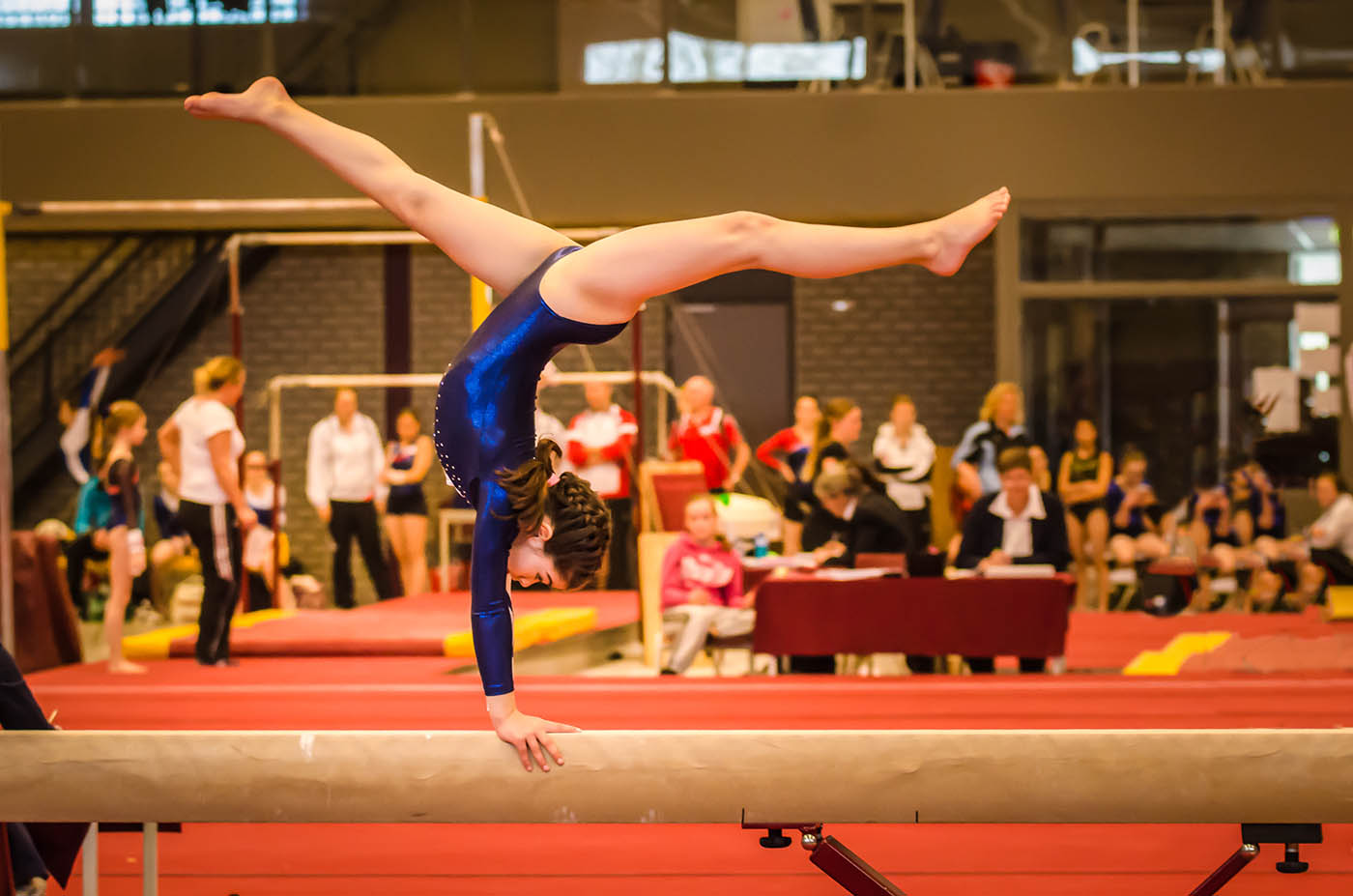We hear from Utah Valley families fairly regularly about enrolling their children in gymnastics classes after mastering basic gymnastics moves like the cartwheel. Questions regarding the different gymnastics levels and programs often accompany those enrollment inquiries. We’ve put together this helpful guide so parents can understand the different levels and set their children up for success by providing realistic expectations for their young athlete’s journey.
The system has been designed to keep children safe while building gymnastics skills progressively. In the United States, two main programs guide young gymnasts: the USA Gymnastics Development Program (formerly the Junior Olympic Program) and the Xcel Program. While each program offers a different path, they both focus on proper skill development and age-appropriate progression.
An Overview of the Levels of Gymnastics
Utah Valley parents often ask us how many levels there are in gymnastics and, ultimately, why there are so many. But like any new skill, gymnasts need to build foundational elements before advancing to more complex techniques. The levels of gymnastics force such development by creating a structured roadmap that guides participants from basic gymnastics moves to complex Olympic-level performances.
Development Levels (1-3)
The first three levels of gymnastics are foundational stages, focusing on body awareness, coordination, and confidence. Children are often taught the following skills at each level:
- Level 1 Gymnastics Skills: forward rolls, straight leg kicks, and basic jumps.
- Level 2 Gymnastics Skills: backward rolls, handstands, and cartwheels.
- Level 3 Gymnastics Skills: round-offs and back walkovers.
Most gymnastics centers teach these levels in enjoyable recreational classes rather than competitive teams. This is so children can spend time mastering fundamental movements before advancing, with no pressure to rush through progression. This comfortable environment is perfect for toddlers looking to master the first level of gymnastics skills and beyond.
Compulsory Levels (4–5)
After mastering the third level of gymnastics skills, gymnasts move onto the fourth level, where competition often begins. Every child performs identical routines on vault, bars, beam, and floor while judges evaluate precise execution of prescribed choreography rather than creativity. The fifth gymnastics level asks for deepened technical prowess before gymnasts move into creating their own complex routines.
Optional Levels (6–10)
Starting at the sixth level, gymnasts work with coaches to create individualized routines showcasing their strengths while including specific requirements (Levels 6-7 require certain numbers of “A” and “B” skill elements). Levels 8 through 10 demand increasingly complex combinations.
Elite Level
Gymnasts who demonstrate technical foundations with exceptional scores can continue to the elite pathway after the tenth level. Athletes who choose to advance typically train between 30 and 40 hours per week and could find themselves on national teams and in Olympic competitions.
Gymnastics Levels by Age and Training Commitments
Progression through gymnastics levels can differ greatly. While some gymnasts can make progress in just one season, others require several years of skills development. To advance, gymnasts must master the requisite skills, meet age and safety requirements, and earn the required minimum all-around scores.
- Levels 6 and 7 require an all-around score of 32.0.
- Levels 8 through 10 require an all-around score of 34.0.
Gymnasts can skip the sixth level if they score 32.0 or higher at the fifth level. This is the only level-skipping allowed in the system.
Training Time Commitments
Gymnastics levels, by age, often correlate with how much time young athletes can commit to their training:
- Levels 1-3: 1-3 hours weekly
- Levels 4-5: 6-12 hours weekly
- Levels 6-8: 12-20 hours weekly
- Levels 9-10: 20-30 hours weekly
- Elite: 30-40 hours weekly
Parents should consider these commitments when preparing their child for their first gymnastics class.
Frequently Asked Questions
The USA Gymnastics Development Program includes 10 levels plus Elite, while the Xcel Program offers five divisions (Bronze through Diamond).
Only the sixth level can be skipped, and only when the gymnast has achieved a qualifying score of 32.0 at the fifth level. This policy ensures safe, sequential skill development.
The USA Gymnastics Development program has structured progression through gymnastics levels 1 through 10, while Xcel offers more flexibility with personalized routines and lower training demands—perfect for gymnasts wanting competition without intense time commitments.
Elite training suits athletes who show exceptional technical foundations and have achieved outstanding all-around scores. Entry to this pathway requires qualifying scores at specific competitions with coach and committee approval.
Understanding Gymnastics Skills by Level
It’s important for parents to understand gymnastics skills by level so they can make informed decisions about their young athlete’s path. The level system is designed to provide structure and safety, regardless if your child hopes for college gymnastics (learn more about NCAA scoring here) or just wants to build confidence and strength.
The first and second levels of gymnastics skills are how young gymnasts build the foundation for advanced skills. Each progression through the levels teaches important life lessons alongside athletic development. For families with boys interested in the sport, similar progression structures exist in men’s gymnastics development programs as well.
Setting Realistic Expectations
Both young gymnasts and parents benefit from structured gymnastics levels. The system establishes clear expectations while promoting safety through age-appropriate progression. But success in gymnastics extends beyond level advancement. Building strength, confidence, and friendships matter equally.
All American Gymnastics has both girls’ and boys’ gymnastics programs that promote skill mastery and enjoyment to create the foundation for lifelong fitness and achievement. If you’re ready to start your child’s journey through gymnastics levels, register now for a free trial class. And remember, each child’s journey looks different—some discover competitive passion early, while others enjoy recreational classes throughout childhood.


